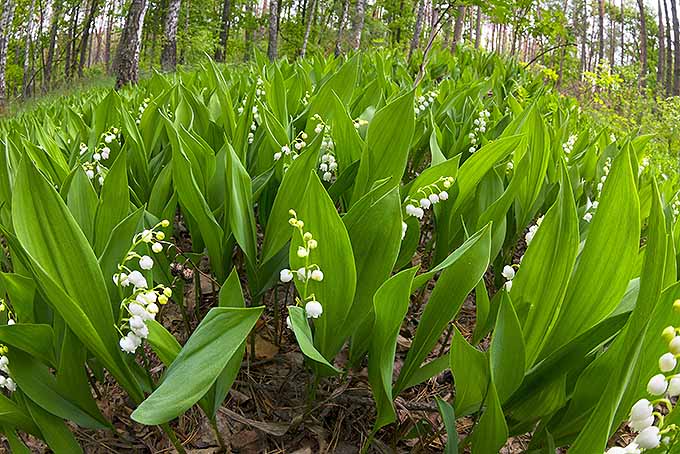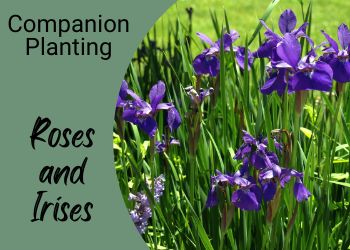Best Iris Companion Plants For A Beautiful Garden
Title:Best Iris Companion Plants for a Beautiful Garden
Introduction:
Irises are beautiful and versatile flowers that can add a touch of elegance to any garden. They come in a wide variety of colors, shapes, and sizes, so there is sure to be an iris that is perfect for your space. But what about companion plants? Which plants should you choose to complement your irises and create a truly stunning garden?
In this blog post, we will discuss some of the best iris companion plants. We will cover a variety of factors to consider when choosing companion plants, such as plant height, bloom time, and color. We will also provide some specific plant recommendations for different types of irises.
Main Content:
When choosing companion plants for irises, there are a few factors you should keep in mind. First, consider the height of the plants. Irises come in a variety of heights, so you need to make sure that your companion plants are the same height or shorter. If you plant taller plants next to irises, they will overshadow the irises and they won't be able to show off their beautiful flowers.
Second, think about the bloom time of the plants. You want to choose companion plants that bloom at the same time as your irises or at different times of the year. This will help to extend the flowering season in your garden.
Finally, consider the color of the plants. You can choose companion plants that complement the color of your irises or that create a contrasting effect. If you want to create a harmonious look, choose companion plants with similar colors to your irises. If you want to create a more dramatic look, choose companion plants with contrasting colors.
Here are some specific plant recommendations for different types of irises:
- For tall bearded irises, you can plant companion plants such as daylilies, delphiniums, or lupines. These plants will add height and color to your garden, and they will bloom at the same time as your irises.
- For dwarf bearded irises, you can plant companion plants such as pansies, violas, or primroses. These plants will add color and interest to your garden, and they will bloom early in the spring before your irises start to bloom.
- For Siberian irises, you can plant companion plants such as hostas, ferns, or ornamental grasses. These plants will add height and texture to your garden, and they will bloom at the same time as your Siberian irises or later in the season.
Conclusion:
Iris companion plants can add a touch of beauty and interest to your garden. By considering the factors of height, bloom time, and color, you can choose companion plants that will complement your irises and create a truly stunning garden.
Iris companion plants can help to extend the bloom time of your irises, add interest and depth to your garden, and deter pests. Some popular iris companion plants include:
- Tall plants: Alliums, delphiniums, lupins, foxgloves, phlox
- Shorter plants: Columbines, dianthus, cranesbill, violas, tulips, lavender (dwarf varieties)
- Ornamental grasses: Miscanthus, pennisetum, sedges
- Perennials: Daylilies, hostas, peonies
- Annuals: Zinnias, marigolds, snapdragons
To learn more about iris companion plants, visit Home Gardening.
FAQ of iris companion plants
- What are some good companion plants for irises?
There are many good companion plants for irises, but some of the most popular include:
* Alliums: These bulbs add height and interest to the garden, and their flowers attract pollinators.
* Daylilies: These perennials bloom for a long period of time, and they come in a variety of colors to complement irises.
* Peonies: These showy flowers add a touch of elegance to the garden, and they can tolerate the same conditions as irises.
* Hostas: These shade-loving plants provide a lush backdrop for irises, and they help to suppress weeds.
* Lavender: This fragrant herb attracts pollinators and deters pests.
- How close together should irises be planted?
The spacing of irises depends on the type of iris and the desired effect. For example, tall bearded irises should be spaced 12-18 inches apart, while shorter irises can be spaced 6-12 inches apart. If you want to create a more natural look, you can plant irises closer together.
- What are some tips for planting iris companion plants?
When planting iris companion plants, it is important to consider the following factors:
* Sunlight: Most irises prefer full sun, but some varieties can tolerate partial shade. Make sure to choose companion plants that have similar sunlight requirements.
* Soil: Irises prefer well-drained soil that is rich in organic matter. If your soil is sandy or clayey, you may need to add compost or other amendments to improve drainage.
* Water: Irises need regular watering, especially during the growing season. Water deeply and infrequently, so that the roots have a chance to dry out between waterings.
* Fertilizer: Irises benefit from an application of fertilizer in the spring. Use a balanced fertilizer, such as 10-10-10, and follow the directions on the label.
- What are some common pests and diseases that affect irises?
Irises are susceptible to a number of pests and diseases, including:
* Iris borers: These insects tunnel into the iris rhizomes, causing the plants to wilt and die.
* Iris leaf spot: This fungus causes brown spots on the leaves of irises.
* Iris rust: This fungus causes orange or brown pustules on the leaves of irises.
* Iris mosaic virus: This virus causes yellow or green streaks on the leaves of irises.
To prevent pests and diseases, it is important to practice good garden sanitation. Remove any dead or diseased leaves or flowers, and rotate your crops every few years. You can also spray irises with a fungicide or insecticide, as needed.
Image of iris companion plants
- Daylilies: Daylilies are a good companion plant for iris because they bloom at the same time and have similar growing conditions. They also come in a wide variety of colors, which can help to add interest to your garden.

- Hostas: Hostas are another good companion plant for iris because they provide shade and moisture. They also have large, colorful leaves that can help to hide the iris's foliage when it is not in bloom.

- Lily of the valley: Lily of the valley is a low-growing plant that blooms in the spring. It is a good companion plant for iris because it does not compete for space and can help to fill in the gaps between the iris's blooms.

- Peonies: Peonies are a classic garden flower that blooms in the spring. They are a good companion plant for iris because they have similar growing conditions and can help to add height and drama to your garden.

- Roses: Roses are a popular garden flower that blooms in the summer. They are a good companion plant for iris because they have similar growing conditions and can help to add color and fragrance to your garden.

- Scilla: Scilla is a spring-blooming bulb that is known for its blue flowers. It is a good companion plant for iris because it does not compete for space and can help to add a splash of color to your garden.

- Tulips: Tulips are a popular spring-blooming bulb that comes in a wide variety of colors. They are a good companion plant for iris because they have similar growing conditions and can help to add color to your garden.

- Verbena: Verbena is a summer-blooming perennial that is known for its bright flowers. It is a good companion plant for iris because it does not compete for space and can help to add color and interest to your garden.
Post a Comment for " Best Iris Companion Plants For A Beautiful Garden"